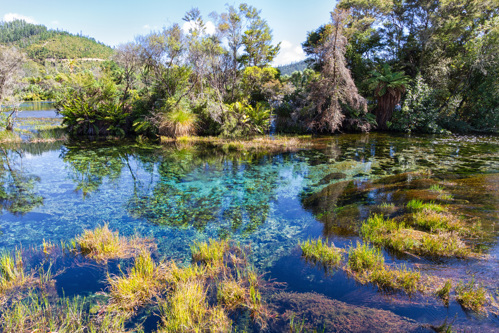Health of New Zealand's waterways requires improved freshwater modelling support and coordination
If we are to turn around the declining state of New Zealand’s lakes, rivers and streams, then better coordination and support for freshwater modelling is critical says the Parliamentary Commissioner for the Environment.
In a new report released today, the Commissioner has reviewed how models are being used by councils across New Zealand in freshwater management. Modelling is used to support decision making for activities such as contaminant discharges and water takes. Robust models and modelling practices help ensure everyone can make good management decisions throughout catchments.
A review of freshwater models used to support the regulation and management of water in New Zealand found that freshwater modelling in New Zealand is fragmented, under-resourced, under-supported and lacking leadership, with many gaps, overlaps, inefficiencies and inconsistencies in modelling between councils.
“When freshwater management was devolved to councils 30 years ago, central government failed to provide the support, coordination or guidance needed. Councils were largely left to and continue to rely on their own devices with modelling,” the Commissioner, Simon Upton explains.
As a result, some councils lack confidence in model use, are uncertain about the best models to use for certain tasks and have spent time and money developing customised models, in some cases, unnecessarily.
The report identified 75 freshwater models in use across the country with much duplication and overlap between their uses. This array of options has created confusion and uncertainty for council staff when trying to determine the best model for their needs. Further, the report found that New Zealand’s modelling resource is dispersed and unevenly spread among regional councils, publicly funded research institutions and some businesses.
To address these shortcomings, the Commissioner is recommending the establishment of a national freshwater modelling support centre, which would provide coordination and support to regional councils, unitary authorities and mana whenua.
“This type of centre would be the most effective and efficient way to streamline the system, fix the issues, and ensure much more confident use of fit-for-purpose models in freshwater management,” he says.
Rather than each council doing their own thing, the Commissioner is also calling for a preferred suite of models adaptable to local circumstances. “A one-size-fits-all approach will not work, but we do need a defined selection of models in a toolbox that councils can use with confidence,” the Commissioner says.
The Commissioner is also advocating for further development of national guidance on use of freshwater models in a regulatory context and regular evaluation of models against this guidance. He emphasises that these are actions that could be taken immediately.
“With the Government revisiting our current approach to freshwater management, it is a good time to consider the current modelling system. Robust models and data will be needed to manage freshwater, whatever the policy framework.”
The investigation also revealed the need for greater inclusion of iwi and hapū in model development and far greater support and commitment to using Māori freshwater models in decision making.
“The use of Māori models in a regulatory context is virtually non-existent, despite many such models existing. Councils often commit to implement mātauranga Māori tools but are unsure of how they align with regulatory requirements,” the Commissioner explains.
To bridge this gap, the Commissioner is recommending that a rōpū of experts be brought together. This group would also support and coordinate the development and use of Māori freshwater models.



